Getting Your Life Back!
Are You an Overworked Business Owner?
Running a successful remodeling company is an ongoing challenge. It starts when you walk into your office on Monday morning. You receive a call from one of your carpenters at 7 am letting you know he will not show up to work that day. So, you pull a carpenter off another project and send him to the job site where you need help. You then discover that the initial lead carpenter did not order the materials due on the 1st job site that day! Now, you are in your office, scrambling to put out other fires. Does this sound familiar?
Does your business have an element of “crisis management” to it? Did you ever believe that after being in business for 5, 10, or 15 years that you would still be working this hard? What happened? Are you spending too many hours at work? Are all these hours at work taking you away from what time you have left with your family? Why is it that instead of running a successful business, you have discovered that you do not own a business, but your business owns you, and you have little or no time left for your family and doing the things you enjoy most!
The Power of Systems
There is a solution, but the solution depends upon you accepting a simple realization. This realization is that your daily business demands are not going to change. Daily demands are not only not going to change but are probably increasing as your company grows. The complexity of day-to-day business operations grows as more and more options are available to the homeowners you work with, and city and state building codes become more complicated and complex. Now, let us add in the Covid-19 pandemic, and things just got harder. The realization is this - since the demands of day-to-day business are not going to change, you must change the way you conduct business.
Implementing clear position descriptions and “standard operating procedures” into business operations bring the power of systems into company operations, allowing you to shift the load you carry each day. Effective systems maximize the time spent within your business. As a business owner, your most valuable resource is time. Honestly, effective systems can assist you in getting 12 hours of work out of an 8-hour day, but you cannot do it alone!
What is a System?
A “system” is simply a standardized process that ensures consistent results by making sure that something (a specific task) is done the same way, time after time after time. A good system ensures consistent results. We all follow simple day-to-day processes every day. We have a certain process we follow from the time we get up to getting to work and getting each project started the right way. When you get to work, aren’t there specific procedures you follow to start each day?
Here is a big clue to help you define how what you need to do to change the way you do business. How do you eliminate most misunderstandings on a construction project:
There is a set of house plans that details the kind of construction that needs to take place.
There are a clear construction contract and good project specifications
With trade contractors, there are clear job agreements that specify what is expected of each sub-contractor
To eliminate misunderstandings, you must put your expectations in writing. There is no mystery here. The power of systems is implemented in your business when you create company-wide “standard operating procedures” by putting position-by-position expectations into writing.
Let us start to do this now. I have included a sample construction company organizational chart below. It represents all the functions in any construction company, whether it is a 2-person company or a company with 20 employees. You may want to change some position titles, but here it is an organizational chart for a standard construction company. It reviews all the required company functions:
Your job is to create an organizational chart for your own company. Use the template above as an example:
Take the sample chart above and create this for your own company
Assign accountability - put a person’s name in each box (if you are a 1-person company, your name is in every box)
It is that simple. What does your present company organization look like? How many organizational functions are you presently responsible for? See my sample below:
Do you like what you see? Most often, owners have taken on company functions not because they are best at doing those tasks it but because it need to be done. In many cases, owners are wearing multiple “hats” because as the company grew, they simply took on more company responsibilities.
Your job as an owner is to guide the strategic growth of your company. Here is a simple question – if you have multiple roles and functions working in your business, how much time is left to work on your business? In most cases, there is little time left over to strategically guide the growth of your business. Let’s change this scenario so that you can work on your business!
Once again, take the chart above, and begin to create a company organizational chart that reflects company operations 6 months from now when the company is running the way you want. Review your position as the owner, and make sure that your role in the company reflects what you do best. Identify what that role is. Create an organizational chart that allows you to maximize your unique talents and then delegate the other company functions that you should not be doing. Do not worry about the cost just yet. This future organizational chart is a roadmap that will help you start to manage company growth more effectively.
At the same time, review what other employees are doing in your organization:
Are you maximizing their abilities in your company responsibilities?
Are they doing what they do best?
Are they in the right seats?
In your future chart, begin to review what your company looks like when it is running the way you want, and each person in the company is doing what they do best. Create that future roadmap!
As you delegate activities that you are letting go of as an owner, my goal is to show you how to save at least 10 hours a week, or 40 hours a month, to work on your business. Simply, if you had an additional 5 to 10 hours a week, or 30 to 40 hours a month to focus on sales, how much additional revenue could you generate? In most cases, owners will tell me it could be several hundred thousand dollars! I make that statement because that is how you will pay for additional employees that may join your company. As the owner, you will move from doing low-revenue activities to high-income-producing activities, producing more company revenue. In addition, you will also be happier not doing those activities that you really do not enjoy doing.
Once you have identified those company functions that you want to delegate, begin to create a “position description” for the responsibilities that you will be asking someone to do. If you are delegating something that you did previously, you can just document what those responsibilities were and put them on paper. You are in an excellent position to document your expectations in the form of a written position agreement.
This is where contractors get stuck, so let me give you some help. I have a business manual that contains 21 construction-specific job descriptions with written procedures. You will want to customize this for your own company, but It is a welcome shortcut and a great start! You will not have to start from scratch!
Here is a list of the sample descriptions:
Administration:
Office Manager Job Description
Accounting Assistant Job Description
Accounts Payable Manager Job Description
Accounts Receivable Manager Job Description
Payroll Manager Job Description
Reception/Office Assistant Job Description
Company Financial Officer Job Description
Human Resources Job Description
Job Description Form
Standard Procedure Form
Production:
General Manager Job Description
Production Manager Job Description
Lead Carpenter (“A”) Job Description
Lead Carpenter (“B”) Job Description
Carpenter Job Description and Procedures
Customer Service Manager Job Description
Customer Service/Punch-Out Job Description and Procedures
Material Procurement Job Description and Procedures
Quality Control Manager Job Description
Safety Manager Job Description
Sales:
Salesperson/Estimator Job Description
Estimator Job Description and Procedures
Marketing Director Job Description
You are welcome to use this material for your own company development at no cost. Please contact me at david@remodelforce.com, and I will send you that business manual in a digital format for your use.
Summary:
Having defined and written job descriptions and procedures is liberating and empowering for your staff. Standard operating procedures make performing job duties clearer and easily understood. They remove confusion. They also enhance performance by providing a written account of what is expected and, more importantly, how your staff is to execute what is expected of them. It frees your staff from being reliant on you. It frees you from being relied upon. It empowers your staff to seek out the answers and solutions to their challenges and problems. And it provides them a ready-to-seek help.
Questions? Please visit my website to learn more.




